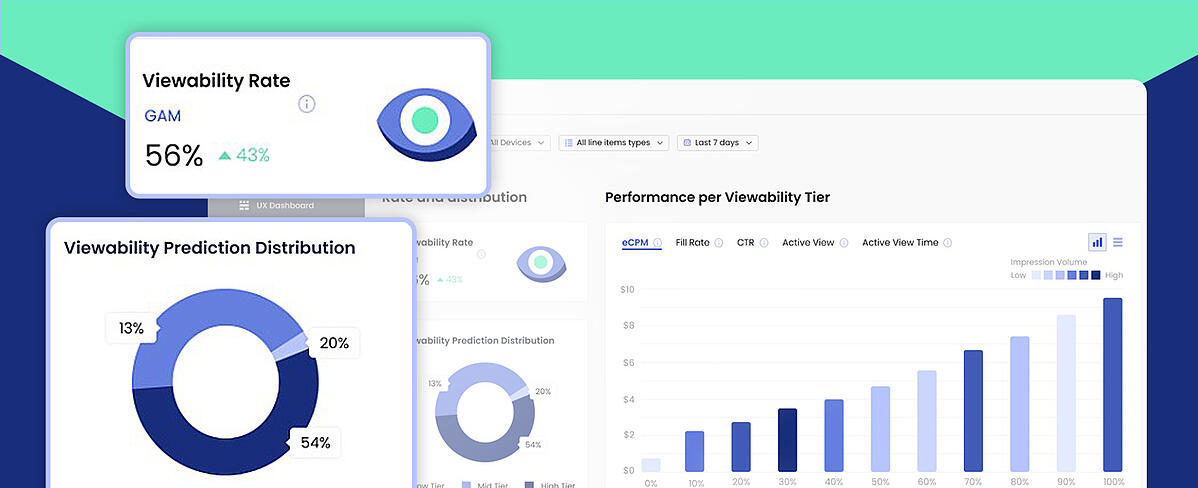Will ads.txt succeed on its mission to stop domain spoofing?
By Asaf Shamly | January 28, 2021

Although domain spoofing has been around for some time, there is still an alarmingly high number of unauthorized sites pretending to be premium publishers. With an increasing amount of marketing revenue being spent online, domain spoofing is more profitable than ever for unscrupulous publishers. A single recent attack in the United States tricked more than 6,000 premium publishers and generated in excess of $5 million per day in fraudulent revenue.
Why does the digital publishing industry still gaze helplessly into this fraudulent void?
The IAB Technology Laboratory is an independent international research and development consortium charged with producing and helping companies implement global industry technical standards. As part of its efforts, it partnered with other tech companies to develop ads.txt to fight domain spoofing, which as we saw above, is a huge headache in the industry.
Their current mission is like an expedition into the unknown with the looming question of ads.txt potential success hanging over it.
What is domain spoofing?
Domain spoofing works by fooling buyers into thinking they are buying from a reputable publisher, such as CNN or The New York Times, while in the background the transaction is actually happening with another unauthorized publisher.
The industry has invested considerable time and money trying to ensure the spotlight is on legitimate sellers, not criminals who are defrauding publishers. Despite their best efforts domain spoofing seems to be bigger and more profitable than ever before. Every domain spoof is reducing the visibility of the legitimate brand, while potentially causing damage to their reputation by being misrepresented by fraudulent sites with reduced viewability.
The proposed solution: The Ads.txt project
The solution to stopping domain spoofing is greater transparency in programmatic advertising. Buyers need to know they are using the authorized digital sellers for a publisher. The ads.txt project meets this challenge head-on, providing publishers and distributors with a secure tool to publicly declare a text file containing an index of their authorized digital sellers. This creates the required transparency for ads delivery while giving publishers more control over their inventory.
This public record of authorized digital sellers will increase a brand’s confidence that they are buying authentic inventory. The increased clarity of the inventory supply chain will make it considerably harder for unscrupulous actors to profit from counterfeiting.
What exactly is Ads.txt?
Ads.txt is a simple solution to what’s considered one of the biggest challenges facing publishers in the digital marketplace today. It improves transparency for programmatic buyers by allowing publishers and distributors to provide an index of authorized sellers. Only a publisher’s Webmaster can post the index, making it easily authenticated. The very nature of ads.txt makes it simple, secure and flexible.
The fact it uses a text file makes updates easy to perform and provides a level of flexibility that can quickly adapt to a changing environment. All of the information needed to populate the ads.txt file is readily available. It’s quick and inexpensive to implement.
As most large publishers will increase their reach by using several different sales channels, ads.txt supports different types of vendor relationships. Whether you utilize content syndication partnerships, networks that programmatically sell for domain owners, or you sell through your own account, ads.txt will work for you.
Adding transparency to ads delivery, including mobile ads, using ads.txt removes the financial incentive from creating misrepresented media. As domain spoofing is primarily performed for profit, this reduction in revenue will cause a rapid decline in its occurrence, if not eventually wipe it out altogether.
How does Ads.txt work and which organizations will benefit?
Participating publishers will add a text file to their servers providing all the information for their authorized sellers. Programmatic platforms can then integrate ads.txt files that allow them to crawl the web compiling the individual lists from each domain, authenticating whether they are authorized to sell a publisher’s inventory. This provides buyers with an easy way to directly validate the inventory they are purchasing.
Here’s the list of organizations and departments that this simple solution can definitely help:
- Third party networks – Domain owners who turn to sales houses and networks to help monetize their inventory. With Ads.txt they can be confident their inventory cannot be undercut by counterfeits
- DSPs – DSPs can use Ads.txt to help advertisers buy in a more secure fashion, while still developing their own unique approach to differentiate them from others
- Publishers – Implementing Ads.txt can help publishers eliminate wasteful spending on counterfeit inventory. Also, domain owners will receive more of advertisers’ spend through approved sales channels
- SSPs – Buyers targeting domains across several SSPs can be tempted by the high performance and low price of exchanges with no direct link to the domain owner. This can increase the likelihood of wasting money on counterfeit inventory, and harm honest SSPs and exchanges
- Advertisers – Ads.txt will give advertisers more confidence that their budget is paying for genuine media
With the long list of parties that will benefit from a wide adoption of Ads.txt, we believe it will be very well received by the mobile and online advertising industry.
Are there any drawbacks?
Despite the industry’s confidence in ads.txt’s ability to achieve its goal, its ultimate success will depend on how widely it’s adopted. Usually, when such a simple and effective solution to a large problem appears, it becomes an industry standard in a relatively short amount of time. If ads.txt isn’t fully embraced, then insufficient adoption could potentially undermine the entire effort.
While the US is likely to lead the way in adopting ads.txt, there needs to be an inevitability about its use globally, so marketers in other regions don’t stunt its growth before it has even started. While we all agree transparency is a positive attribute, some publishers won’t like the fact that ads.txt allows marketers to figure out what others are paying for the same inventory.
Browsi is rooting for ads.txt
The ways in which scammers try to trick us or divert our money away from legitimate suppliers are too numerous to list. Ads.txt implementation is simple and hands control of the brand, rate card and media back to the publisher. This helps to ensure the revenue goes through approved sales channels, and doesn’t get wasted on counterfeit inventory. Using ads.txt helps increase your visibility, and with Browsi taking care of your viewability rates, you have nothing to lose and a lot to gain, so we believe it’s a must for every publisher.
Latest Articles
-

Do NOT make me choose between a great UX and boosting my revenue!!
The ongoing clashes between revenue, product, and editorial teams are painful to say the least. It doesn’t have to be this way.
View Now -

Your Brand New Viewability Dashboard!
Understand your inventory breakdown with the new Viewability Dashboard.
View Now -

Maximize Your UX & Revenue Data With Personalized Reports
Ready to uncover insights and step up your ad layout strategy?
View Now
